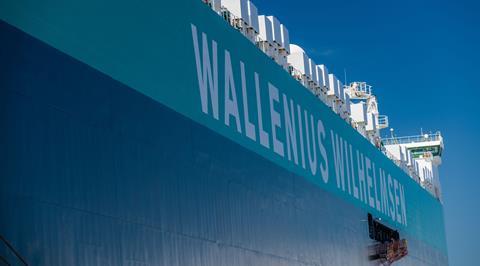Wallenius Wilhelmsen’s ro-ro Torrens has become the first vessel in its fleet to bunker B30 HSFO-Biofuel.

Calling at Masan port in South Korea, as part of its regular sailing schedule, the ro-ro bunkered the drop-in fuel as part of a unique trial. The HSFO blended with UCOME (bio feedstock) can be used in existing engines without any modification or tank cleaning. Wallenius Wilhelmsen said that the number of suppliers worldwide offering this particular fuel is currently very limited, and the issue is compounded by the general lack of demand for marine biofuel blending in South Korea.
Jang Hongseok, manager energy sourcing at Wallenius Wilhelmsen, added: “Despite the growing demand and supply of biofuels around the world, the preparation of biofuels in Korean ports has been somewhat slow. As Korea is one of our major bunkering ports, stable biofuel supply is essential to secure flexibility of tonnage allocation, so I am pleased to have a B30 HSFO trial with GS Caltex, one of Korea’s major fuel suppliers, and I hope close cooperation will continue in the future.”
A collaboration between GS Caltex Corporation and Wallenius Wilhelmsen, supply will be limited in South Korea until the rules and regulations for biofuels are finalised by the authorities. Cha Hyungmin, team leader of GS Caltex’s biofuel team, said: “GS Caltex has paved the way for developing bio-marine fuels in Korea, and we expect this B30 Bio-Marine Fuel (HSFO) trial with Wallenius Wilhelmsen will be a meaningful step for scrubber installed vessels of global shipping companies to reduce their carbon emissions when calling at Korean ports.”
In the meantime, Wallenius Wilhelmsen is currently assessing the viability of both HSFO-biofuel blends and VLSFO-biofuel blends in the Asia region as part of its global deep-sea trade decarbonisation strategy.
















